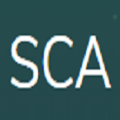This paper studies an intelligent reflecting surface (IRS)-aided downlink ultra-reliable and low-latency communication (URLLC) system, in which an IRS is dedicatedly deployed to assist a base station (BS) to send individual short-packet messages to multiple users. To enhance the URLLC performance, the users are divided into different groups and the messages for users in each group are encoded into a single codeword. By considering the time division multiple access (TDMA) protocol among different groups, our objective is to minimize the total latency for all users subject to their individual reliability requirements, via jointly optimizing the user grouping and block-length allocation at the BS together with the reflective beamforming at the IRS. We solve the latency minimization problem via the alternating optimization, in which the blocklengths and the reflective beamforming are optimized by using the techniques of successive convex approximation (SCA) and semi-definite relaxation (SDR), while the user grouping is updated by K-means and greedy-based methods. Numerical results show that the proposed designs can significantly reduce the communication latency, as compared to various benchmark schemes, which unveil the importance of user grouping and reflective beamforming optimization for exploiting the joint encoding gain and enhancing the worst-case user performance.
翻译:本文研究的是智能反映表面的(IRS)辅助下行链路超可靠和低延迟通信系统(URLLC),该系统专门部署IRS,协助基地站(BS)向多个用户发送个人短包装信息;为了提高URLLC的性能,用户被分为不同的组别,每个组的用户的信息被编码成单一的编码词。通过考虑不同组之间的时间区分多重存取协议,我们的目标是通过联合优化BS的用户分组和整块分配以及IRS的反射模版,最大限度地减少所有用户的完全延迟性。我们通过交替优化解决最小化问题,通过使用连续的convex近似(SCA)和半确定性通缩(SDR)技术优化每个组的用户信息,我们的目标是通过使用K-手段和贪婪法方法更新用户组的用户群的更新,同时共同优化BSBS的用户群和整行分配。我们通过交替优化解决最小最小最小最小化问题,通过利用最坏的用户群的升级计划,提高用户的升级能力,提高用户的升级能力,使用户群进行最起码的升级,从而提高用户的升级,使用户的系统升级化,使用户的系统升级成为为升级的升级。




